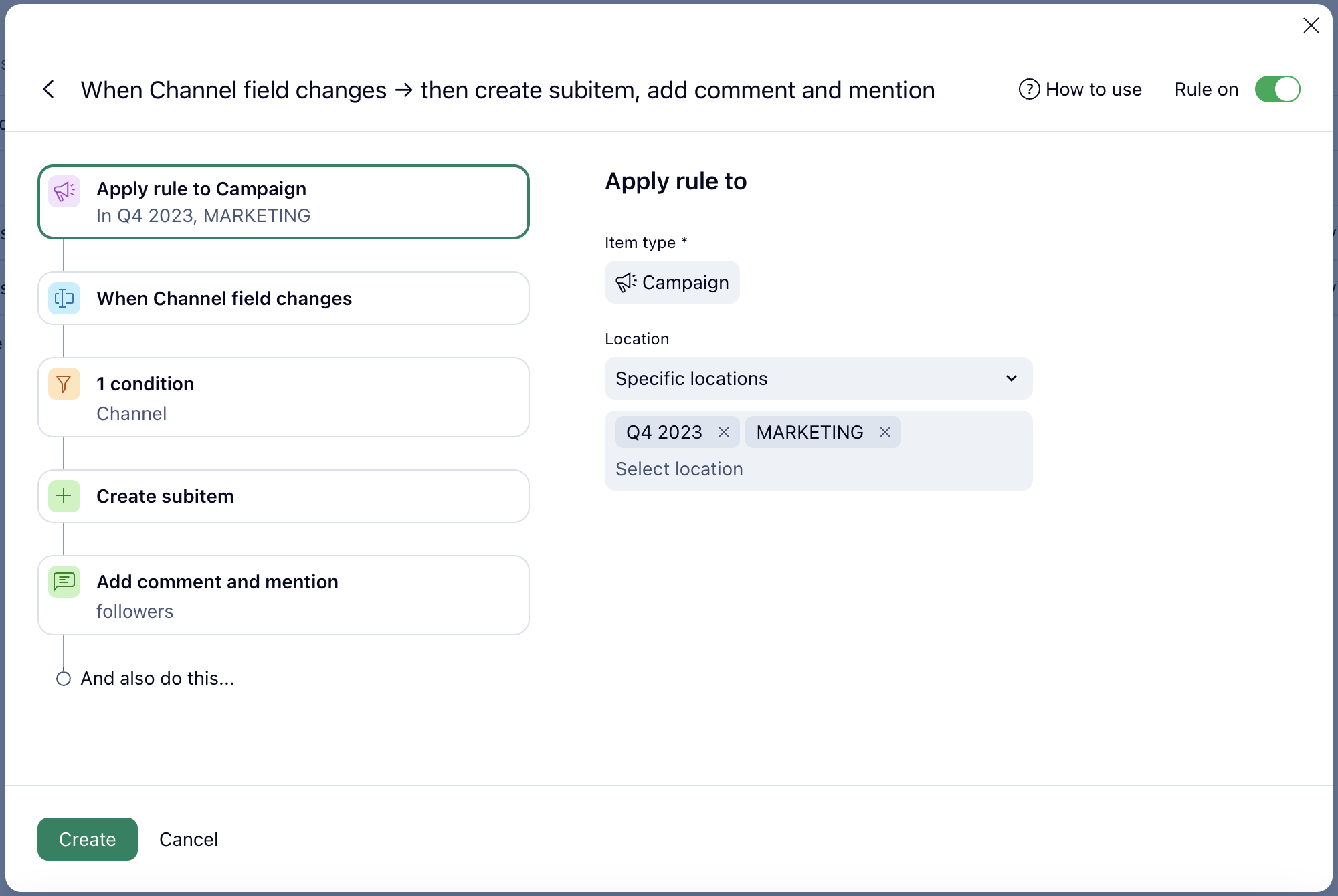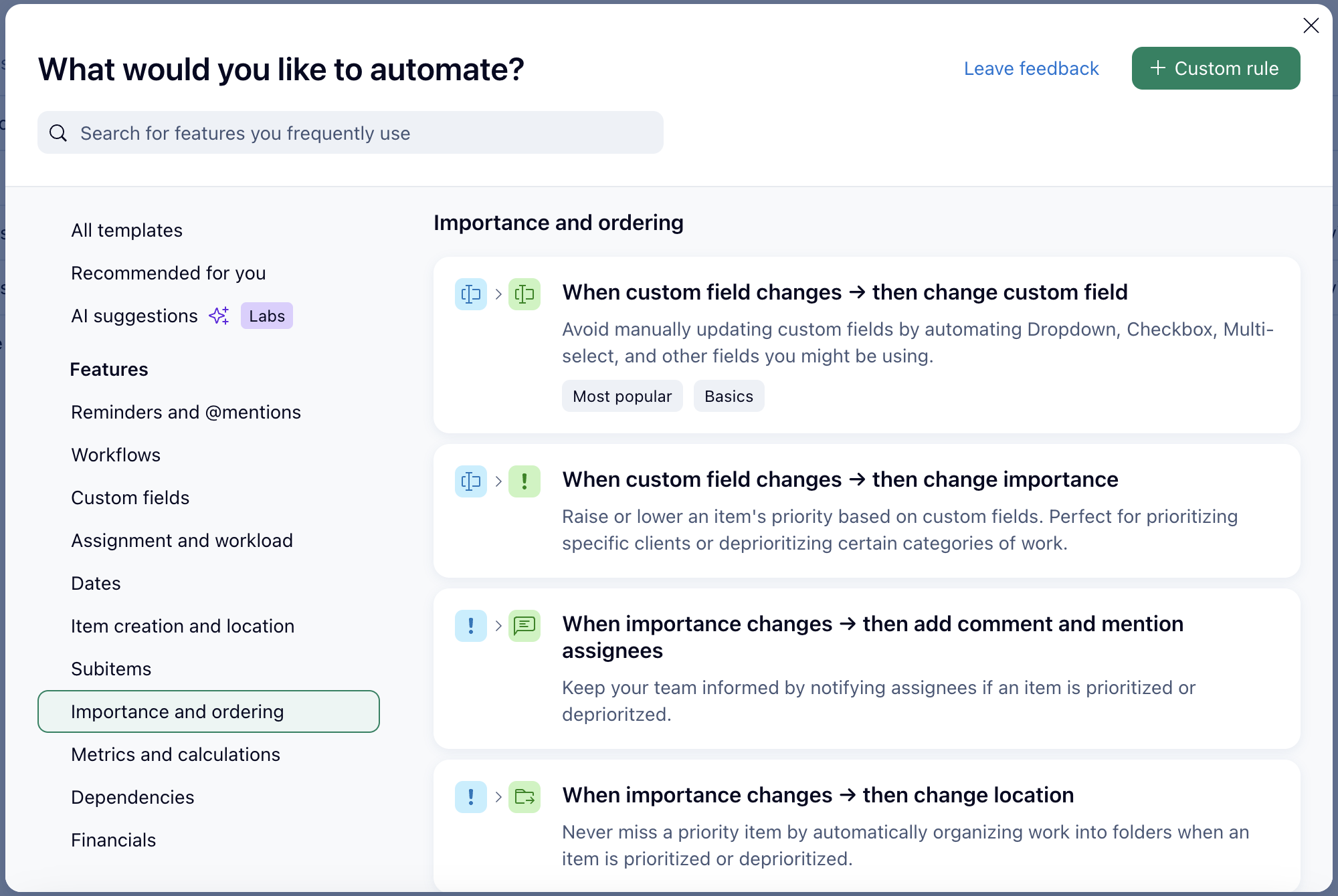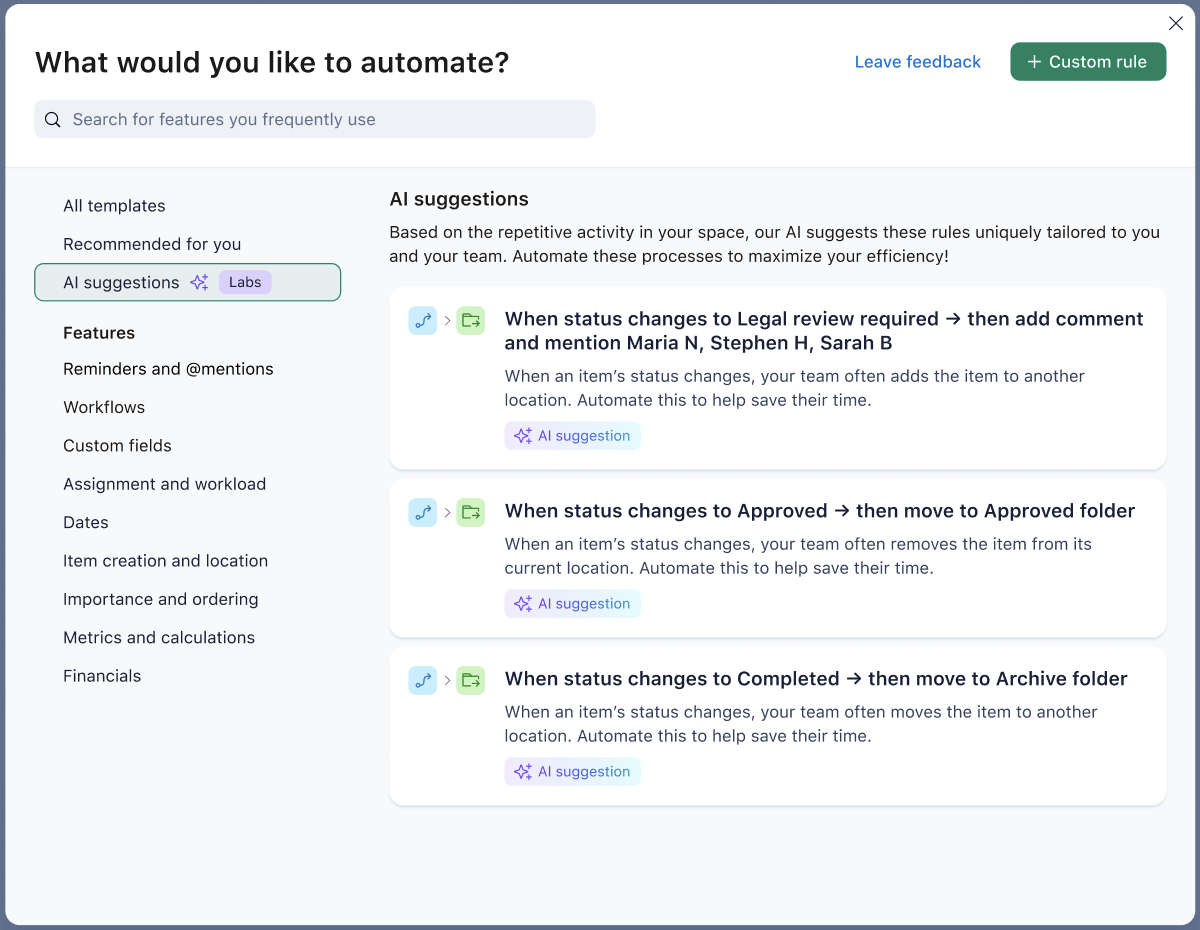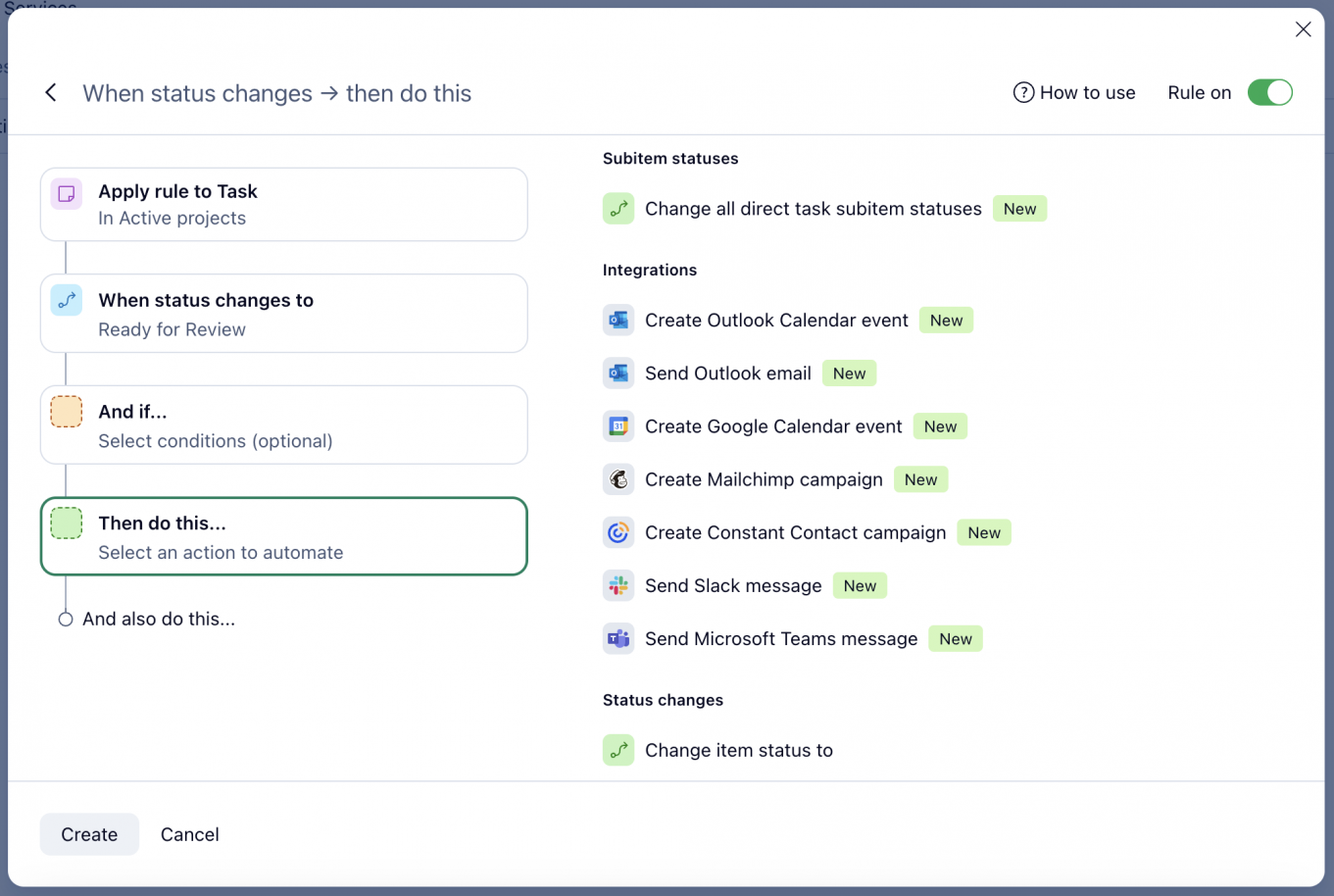Organizations are navigating a significant shift in operational norms. The journey of digital transformation varies for each company, but one common insight has emerged: the urgent need for business agility and the capacity to swiftly design and automate work processes. This necessity stems from the complex technology stacks that businesses have accumulated over time.
Companies must pinpoint their processes, automate them across the organization and their toolset, and adapt them easily to their specific needs. Despite the keenness to implement these changes, numerous challenges persist in achieving this transformation seamlessly.
According to Gartner, by 2026, 30% of new apps will use AI to drive personalized, adaptive user interfaces. As the report noted, “intelligent applications push insights within apps business users already use, so they won’t need separate business intelligence tools to assess and understand the state of their business.”
Let’s dive in and see how Wrike’s artificial intelligence (AI) is providing solutions to the current market effects of digital transformation. This includes smart machine learning and pioneering AI that will change how you work with us forever. There’s no going back — and we’re here for it.
Wrike leaps ahead of competition with automation toolkit, introducing process discovery
Wrike’s process discovery solution sets a new standard in project management software. We are the first to bring these unseen process discovery and automation capabilities to work and project management platforms. This innovative solution truly sets Wrike apart from the competition. Other providers offer simple automation tools, integrated or independently, but admins and teams must ideate the scenarios or rely on limited automation rules.
This new offering is perfectly poised to tackle the challenges that have arisen from market shifts and the move to digital transformation.
The challenges of digital transformation
Let’s unpack three critical problems identified by Wrike as components of the broader transformation problem to provide a clearer understanding of this complex landscape.
1. Organizations design low-quality process solutions to solve a local problem rather than a strategic need
Recent years have compelled companies to transition their operations to digital platforms swiftly. Traditional paper-based processes are no longer feasible, necessitating a quick shift to a digital workflow. This transition has exposed inefficient procedures, and the urgent requirement for digital migration has often resulted in the implementation of subpar automated solutions.
2. Designing processes demands the mindset of a process designer, a skill set that regular business users might not possess
Business users often lack the expertise to create and adapt effective processes over time. They depend on specialists who may not have the bandwidth or time to automate all their requirements. Even though business users are in a position to drive change, the complexity of the technological infrastructure becomes a hindrance. To empower them, they need guidance and easy-to-use solutions that can help unravel their potential for automation.
3. Mature teams require cross-departmental, cross-team, and cross-application workflows
As businesses undergo digital transformation and mature, it’s anticipated that business processes will span across various systems. This development will highlight the necessity to automate, manage, and enhance workflows across numerous departments.
Individuals often find automation challenging to quickly adopt due to constraints such as lack of time, skills, resources, perceived complexity, or negative experiences with similar tools. However, it’s important to stay ahead of the curve in the automation world. Forrester estimates that 10pc of operational processes will use large language models (LLMs) coordinated by autonomous workplace assistant (AWA) digital coworkers. What’s more, automation can yield significant time savings, mitigate risks, decrease human errors, streamline processes, and ensure timely execution.
How Wrike solves these challenges
So, how does Wrike address the above issues? Our recent updates empower business users to become citizen developers. By leveraging our AI mechanism and automation best practices, we provide use cases meticulously curated by our experts.
These use cases assist you in choosing the most efficient templates and automated processes, thereby addressing not just local issues but also your organization’s strategic needs. You don’t need a process designer’s mindset to design processes.
Our platform guides you through the best practices the Wrike team uses, enabling you to automate routines and learn along with us, thereby ensuring high-quality process solutions.
Recent Wrike workflow automation releases
Wrike has consistently been a strong player in the realm of workflow automation. Our primary goal is to simplify your work life, making it more efficient and intelligent. 2023 marked a significant milestone in our automation journey, with numerous feature releases that further enhanced our service offerings. Let’s take a look back!
Early 2023 releases
In line with our commitment to continuous improvement, Wrike released many updates at the beginning of this year to enhance our automation rules’ capabilities. We have expanded our suite of triggers, actions, and conditions to cater to a broader range of your operational needs. Some noteworthy features include:
- You no longer need to move completed items to the archive folder manually. Our system can automatically add or remove items in specific locations.
- We have integrated features that ensure incoming tasks are automatically delegated to the appropriate individuals. This includes features that reroute items, unassign tasks upon completion, and set up triggers based on the assignee.
- We’ve also added a feature allowing stakeholder involvement depending on the approval decision. For instance, stakeholders can be automatically mentioned when an approval finishes with a ’Rejected’ decision.
- And numerous other features designed to streamline your workflow management!

November releases
We’ve recently simplified the process of getting started with automation by introducing our automation templates gallery in early November. This gallery features over 50 ready-to-use automation use cases, essentially preset automation rules based on best practices and logically grouped.
These preconfigured automation rules can be used as provided or slightly adjusted to align with your team’s unique processes. The templates help teams swiftly initiate automation, explore various usage scenarios, and customize them according to their needs.

We’ve also made waves in the market with our innovative AI suggestions for automation. This advanced feature enables teams and admins to uncover processes within their daily or weekly routines and select automation templates recommended by our intelligent AI system.
Not sure which rules would best accommodate your needs? Our AI is here to assist. Our intelligent platform analyzes your workflow to identify patterns and then suggests rules that can immediately optimize your daily operations. Prepare for a touch of automation magic!

Final 2023 releases
Finally, we’ve made it possible for you to automate workflows across your favorite productivity applications. Companies often use a plethora of productivity tools, and processes can falter when there’s a communication breakdown between these apps.
Our automation feature now acts as a bridge between Wrike and your preferred third-party tools. Whether it’s creating events in Outlook or Google Calendar or sending messages on Slack or MS Teams, Wrike’s automation capabilities have got you covered.
This integration ensures a seamless flow of information and tasks across your suite of productivity tools, enabling you to maintain a unified, efficient workflow. By eliminating the silos between applications, Wrike’s automation helps you optimize your work processes, save time, and enhance overall productivity.

But don’t just take our word for it — start your free trial of Wrike today and discover how our AI-powered software can give you a competitive edge in the industry. Experience the Wrike difference today and take your work management to the next level!


